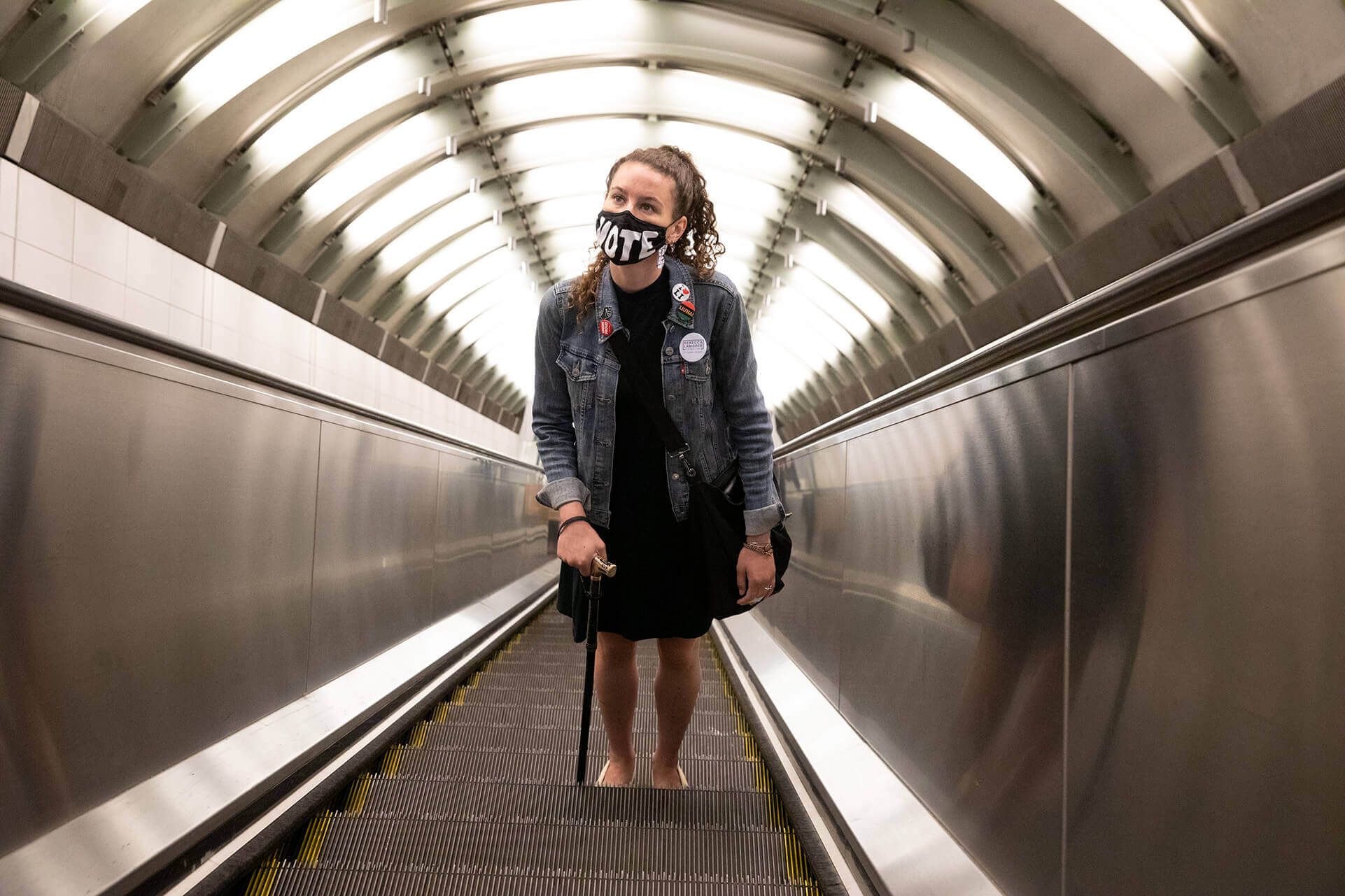Rebecca's story
Rebecca's quote - "I love New York City. But many days, I feel like New York doesn’t love me back."
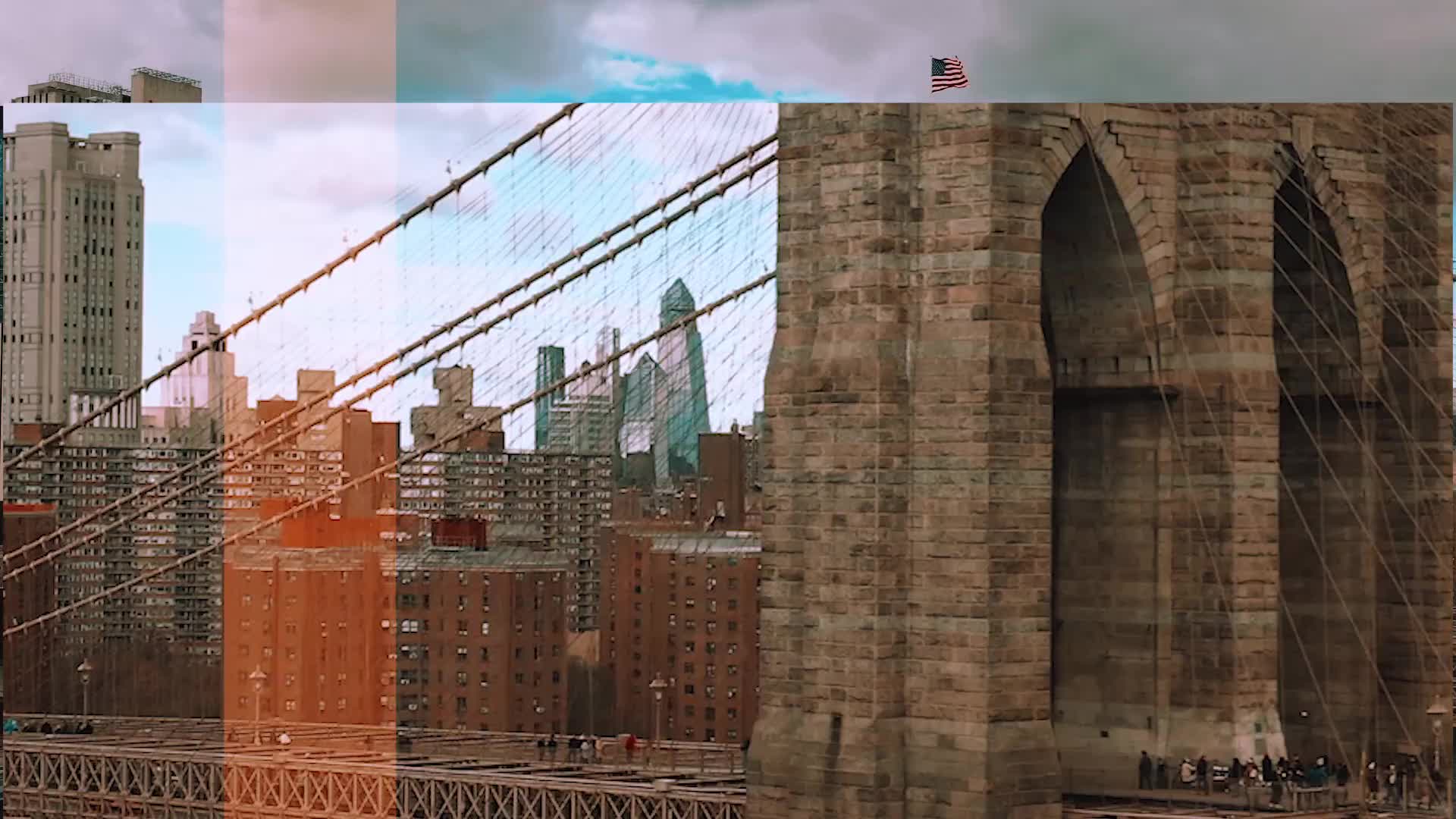
Rebecca’s quote continues – "It isn’t made for me, a person with a disability. And worst of all, nobody cares about changing that."
Rebecca Lamorte, 30, ran for New York City Council in June 2021.
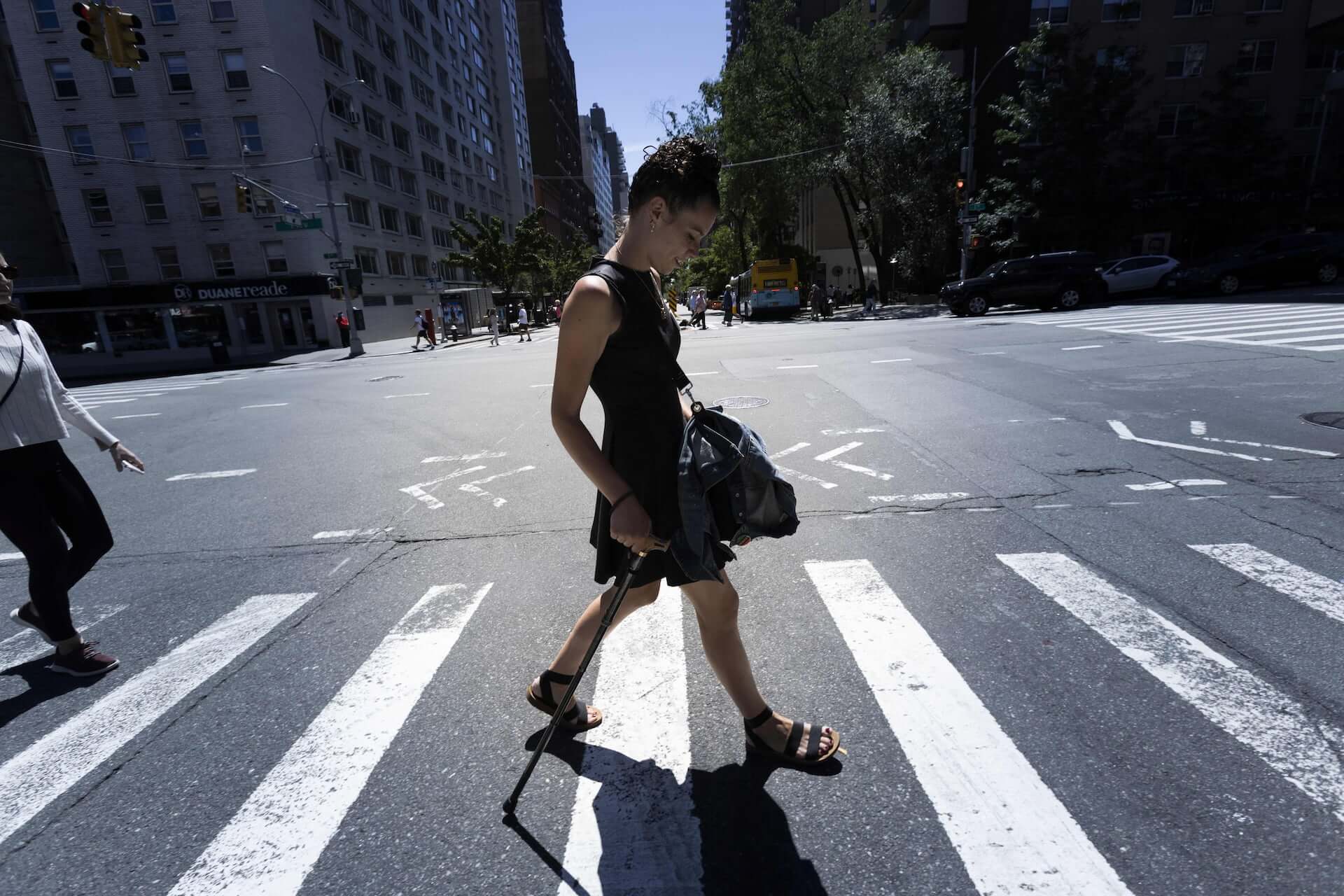
REBECCA CAMPAIGNING
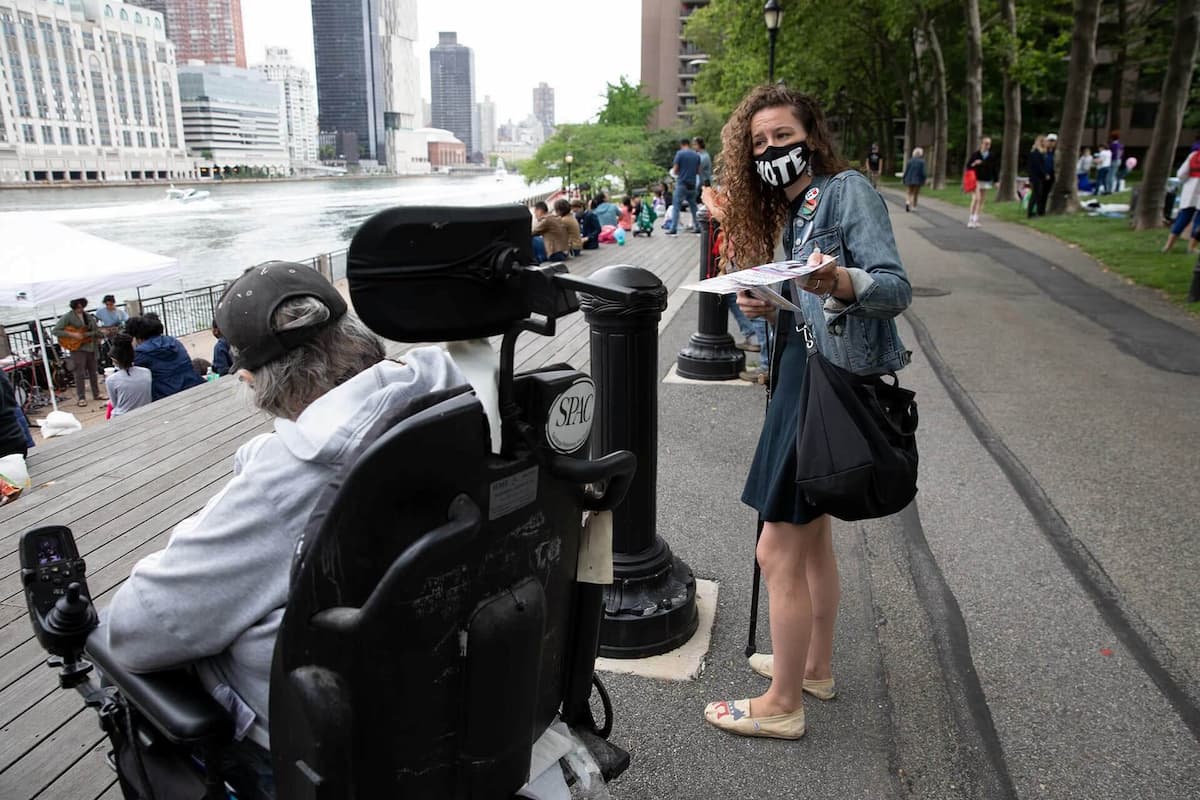 Rebecca’s quote – "Campaigning is something that's meant specifically for able-bodied people. You're constantly on the go and your body doesn't get a chance to rest."
Rebecca’s quote – "Campaigning is something that's meant specifically for able-bodied people. You're constantly on the go and your body doesn't get a chance to rest."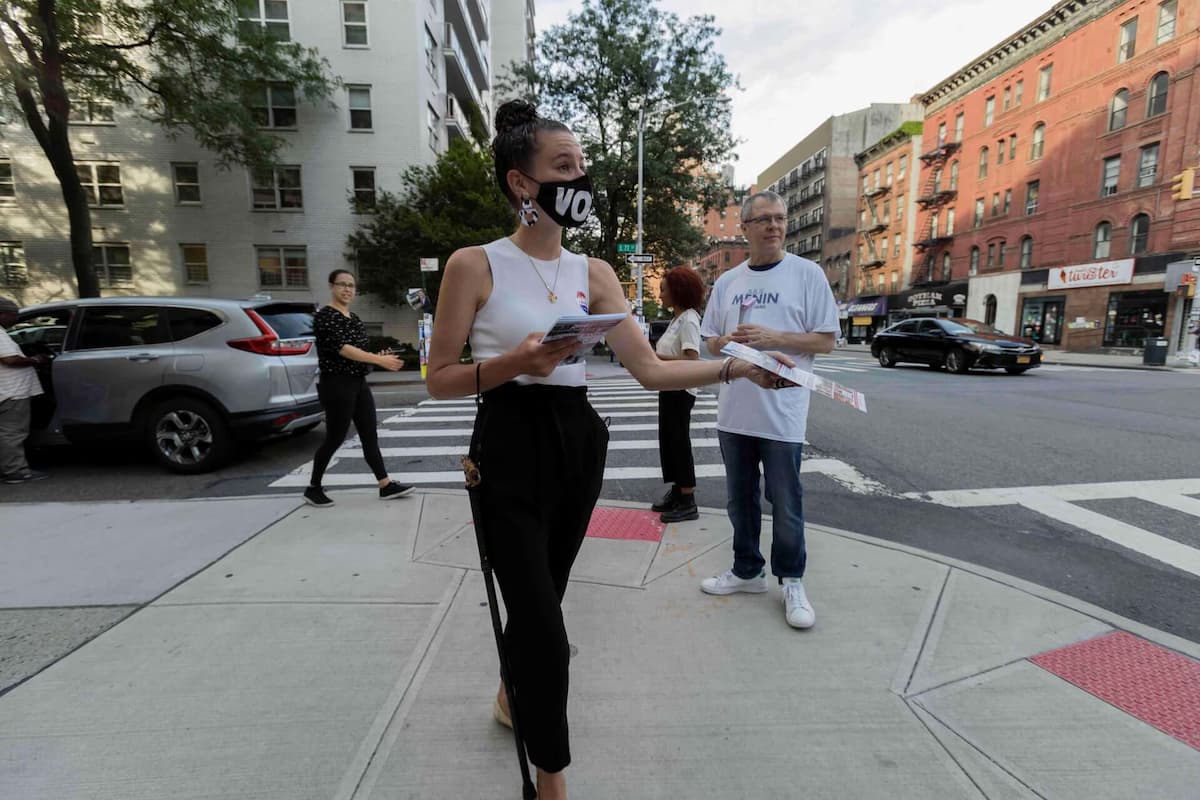

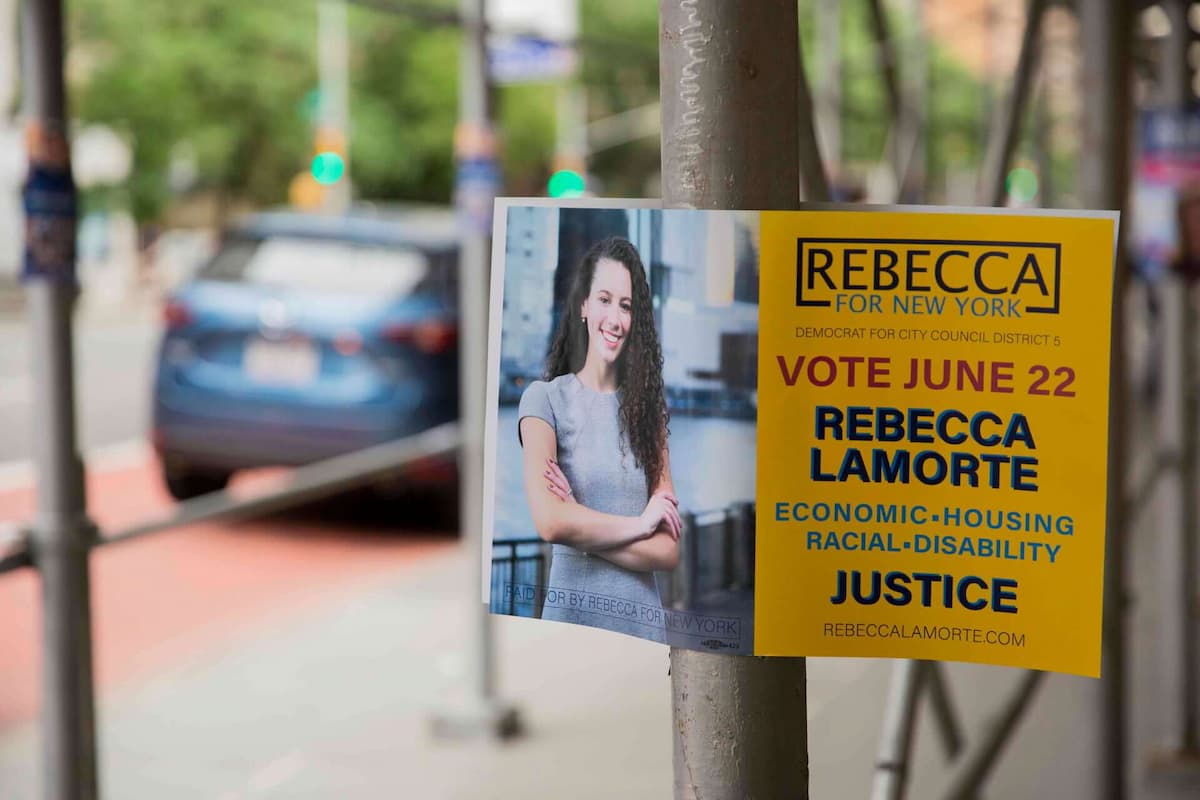
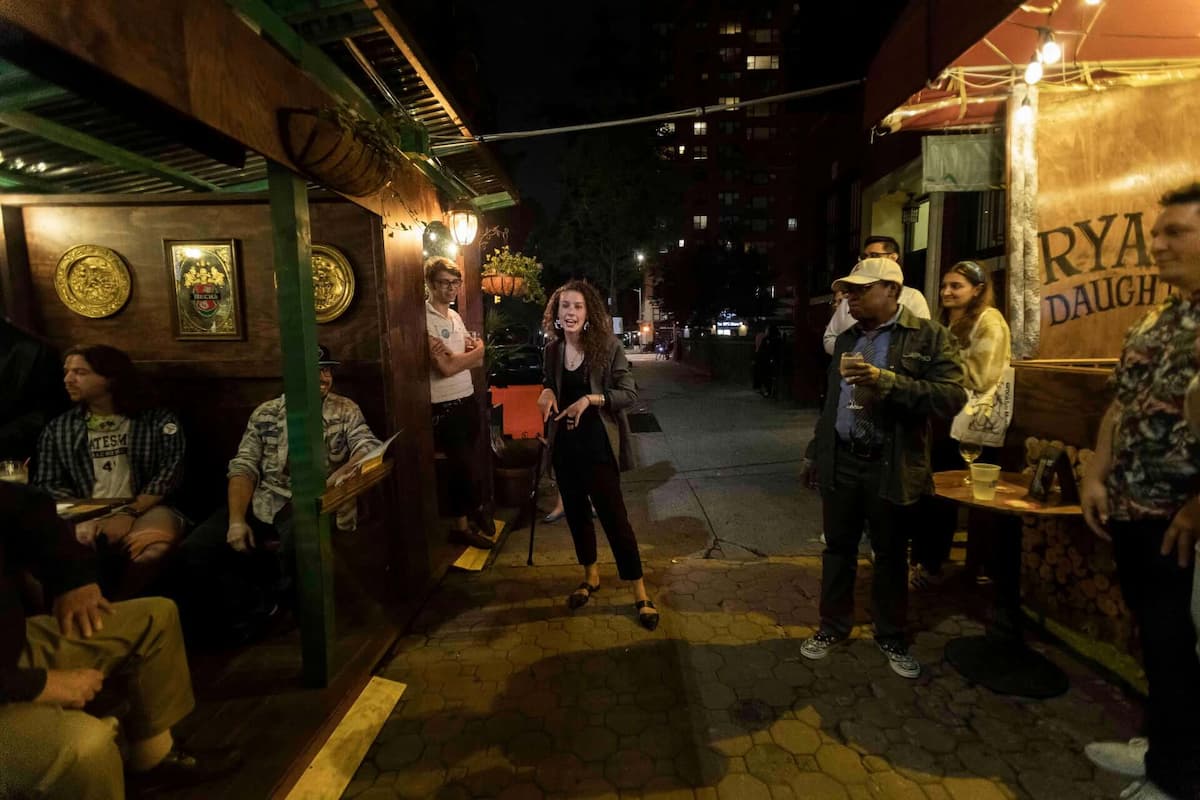 Rebecca’s quote – "One of the most difficult things is door knocking. There was one day when I walked up 70 flights of stairs. That night I couldn't get to my walk-up apartment. So I had to sit at the base of the stairs just waiting, getting to a mental space where I could tolerate the pain to just do two final flights."
Rebecca’s quote – "One of the most difficult things is door knocking. There was one day when I walked up 70 flights of stairs. That night I couldn't get to my walk-up apartment. So I had to sit at the base of the stairs just waiting, getting to a mental space where I could tolerate the pain to just do two final flights."

 Rebecca’s quote – "For me, the only way my pain subsides and improves to a manageable level is to rest my leg. And there just isn't time for that."
Rebecca’s quote – "For me, the only way my pain subsides and improves to a manageable level is to rest my leg. And there just isn't time for that."


The largest silenced minority in the US
Among American adults, 26% have some type of disability, of which mobility-related impairment is the most common.
If people with disabilities were formally recognised as a minority group, they would be the largest in the US. And yet, they are far from being seen or heard.
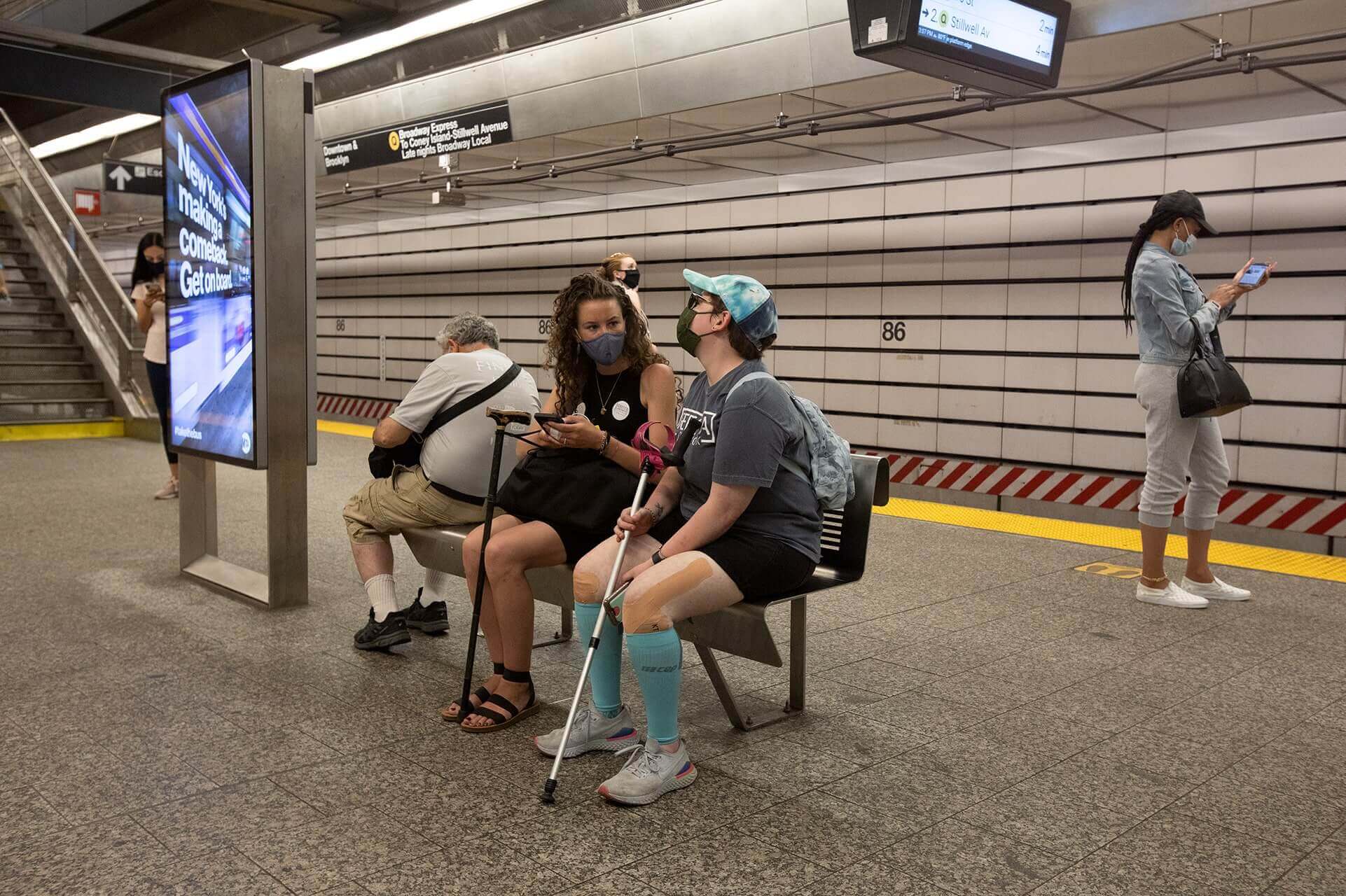
Rebecca's accident
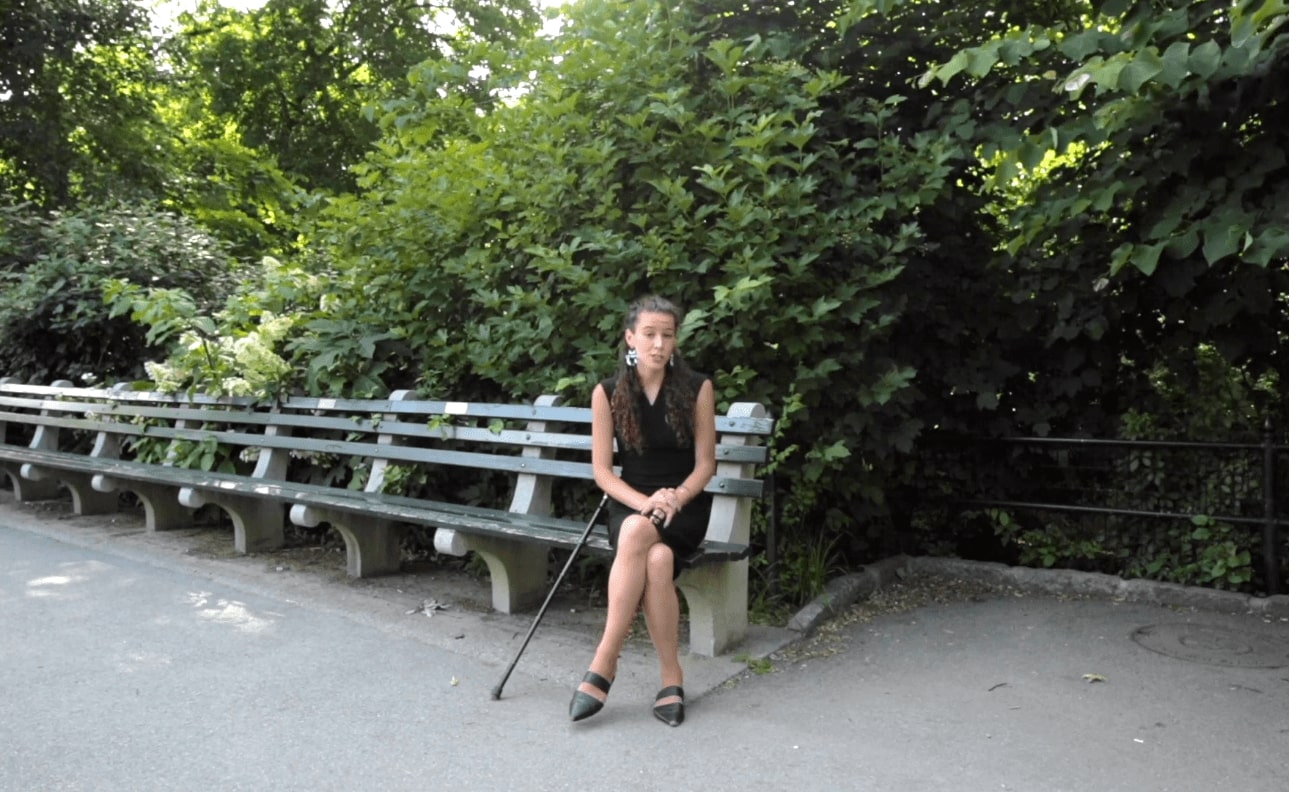
The least accessible subway system in the US
Out of the 472 active subway stations in New York City, less than one-quarter (23%) are equipped with elevators.
84% of subway station elevators reported at least a week’s worth of outages in 2018. For example, the elevators at Times Square, 42nd St., averaged outages of 30 days.
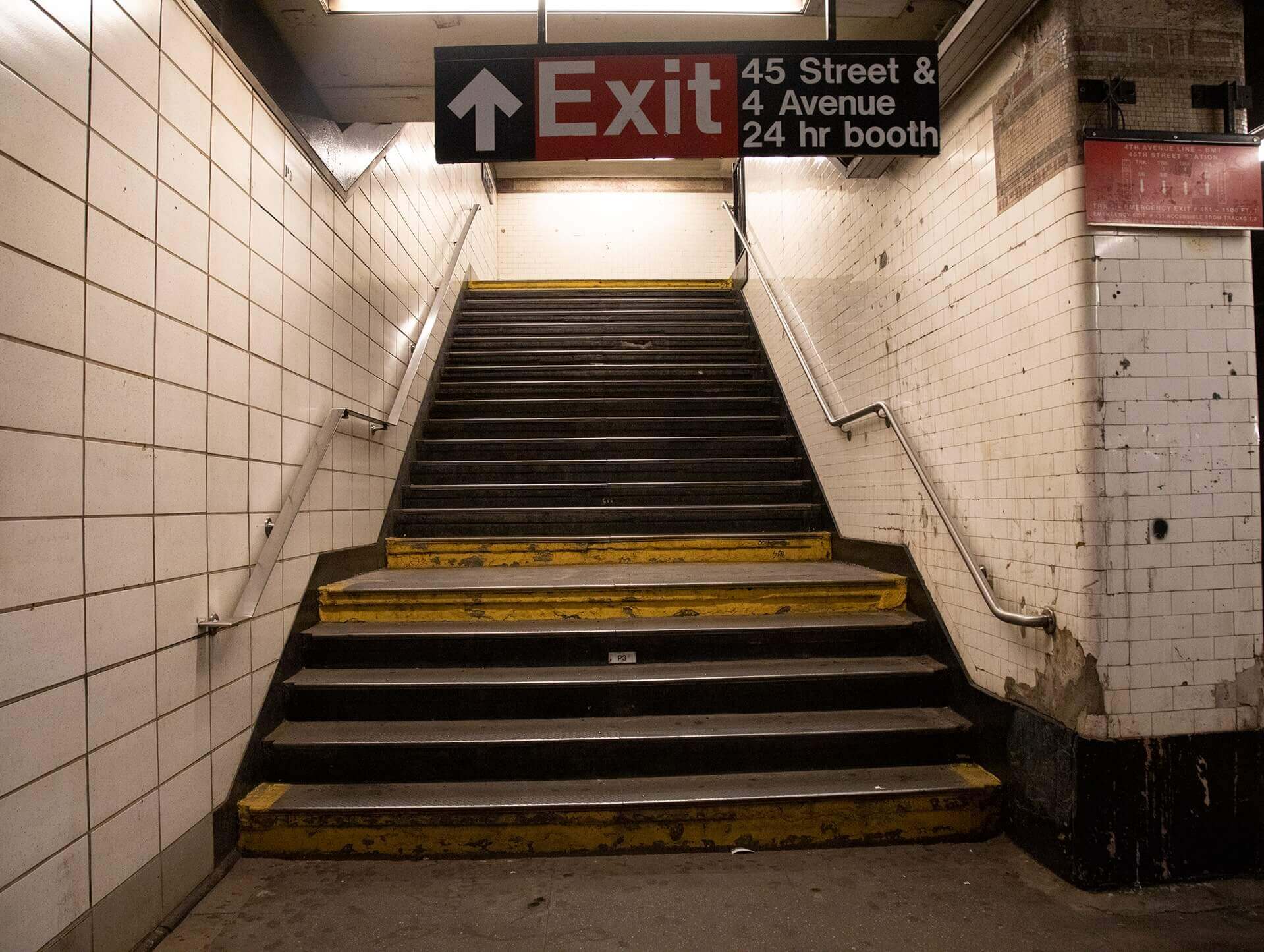
Unreliable 24/7 subway system
A personal account of Sarah Kim, disability journalist with cerebral palsy
I use an electric wheelchair when I travel long distances for safety and time-efficiency reasons. During my undergraduate years at an Upper Manhattan college, I always travelled 20 blocks to get to the nearest accessible subway station. And if by luck the elevator was working, I’d just hope it was a good day and have faith that the elevator at my destination would be operational, too.
However, there were countless times when I’d be stuck on the subway platform with a broken elevator. In these situations, I had one of two options: wait for Good Samaritans to pass by to help me carry my 60-pound (27 kg) chair — a significant upgrade from the 250-pound (213 kg) one I had during my first year living in the city, I’ve learned my lesson quickly — up the flight of stairs. My next best option was to get back on the train and ride it to the next closest station — which can be as far as a dozen stops away — and either take the bus or travel on the opposite side of the subway track to arrive at my destination, again.
Other “options” for New Yorkers with disabilities
Access-A-Ride is a network of vans equipped with wheelchair lifts that drop eligible passengers off at their destination for the price of a subway ride: $2.75. But there are several caveats.
- First, the passenger must schedule the ride 1-2 days in advance. Since this is a shared service, customers may be offered a pick-up time an hour earlier or later than requested. After the van arrives, passengers have five minutes to meet the driver, or they get counted as a no-show.
- In 2017, Access-A-Ride launched the “On-Demand E-Hail” programme, which allows its 1,200 users to electronically book $2.75 taxi rides without having to schedule trips in advance. But, a significant drop in available vehicles since the pandemic has made this an undependable option.
MTA Buses are touted as “100% accessible to customers who use wheelchairs.” But bus drivers don’t always know how to operate the ramps or lifts to board passengers with mobility disabilities. The city’s lack of enforcement against cars blocking bus stops — and delays in plowing piles of snow during winter — also prevents drivers from being able to pull up to the kerb so riders with disabilities can safely board or exit the bus.
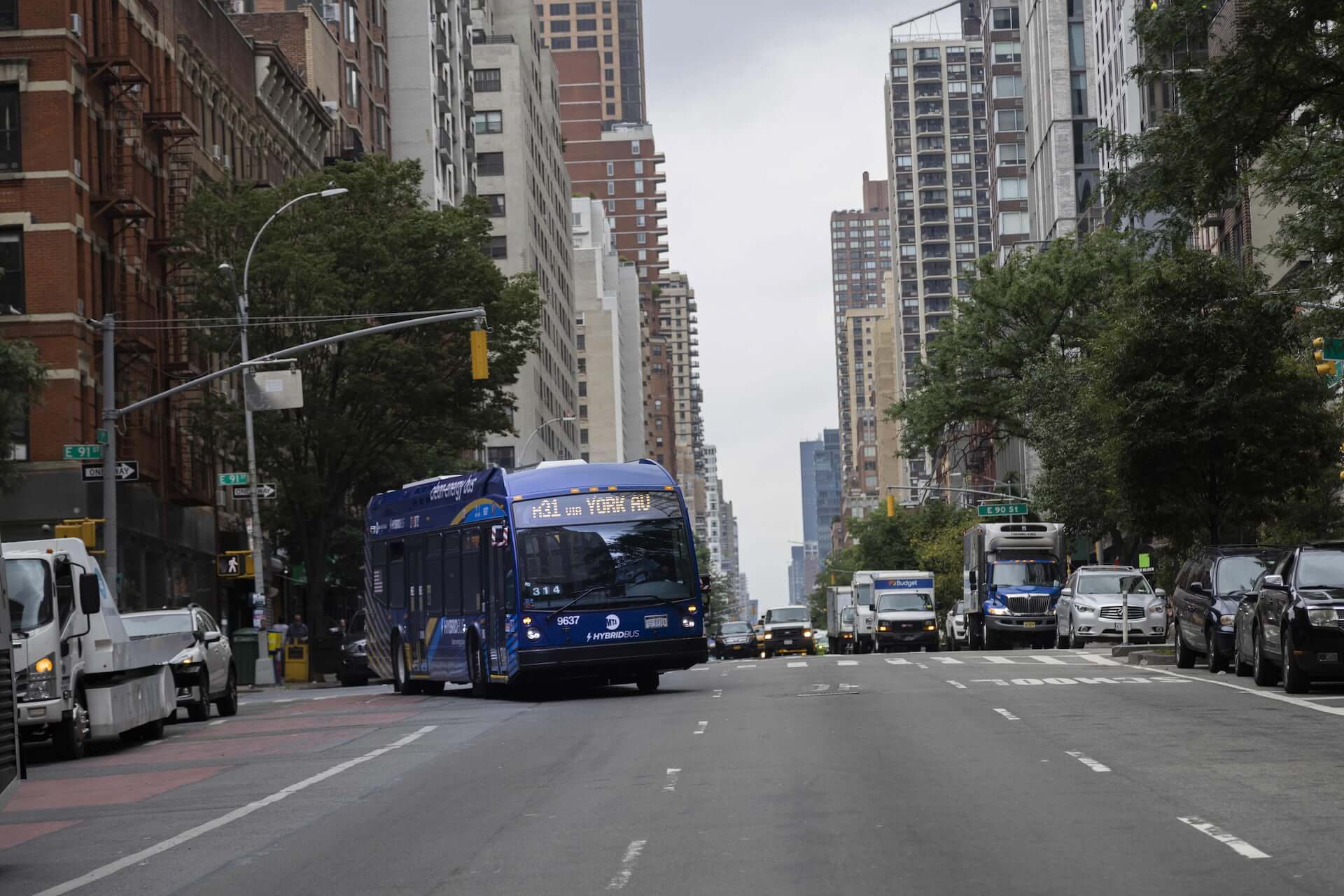
Rebecca's dog
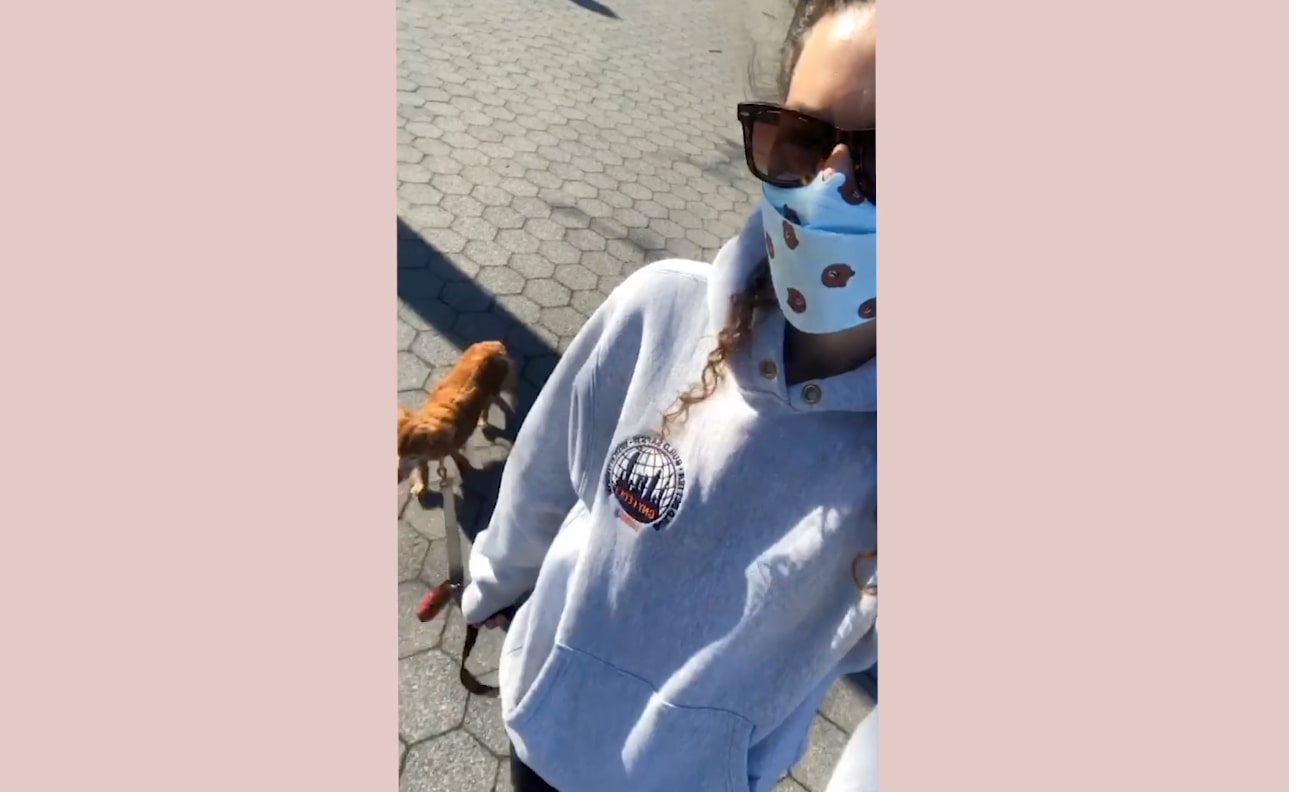
Rebecca's Job
For the past 10 years, Rebecca has worked with prominent New York labour unions advising on legislative and communications issues.
After her accident in 2013, Rebecca started advocating for the disabled community.
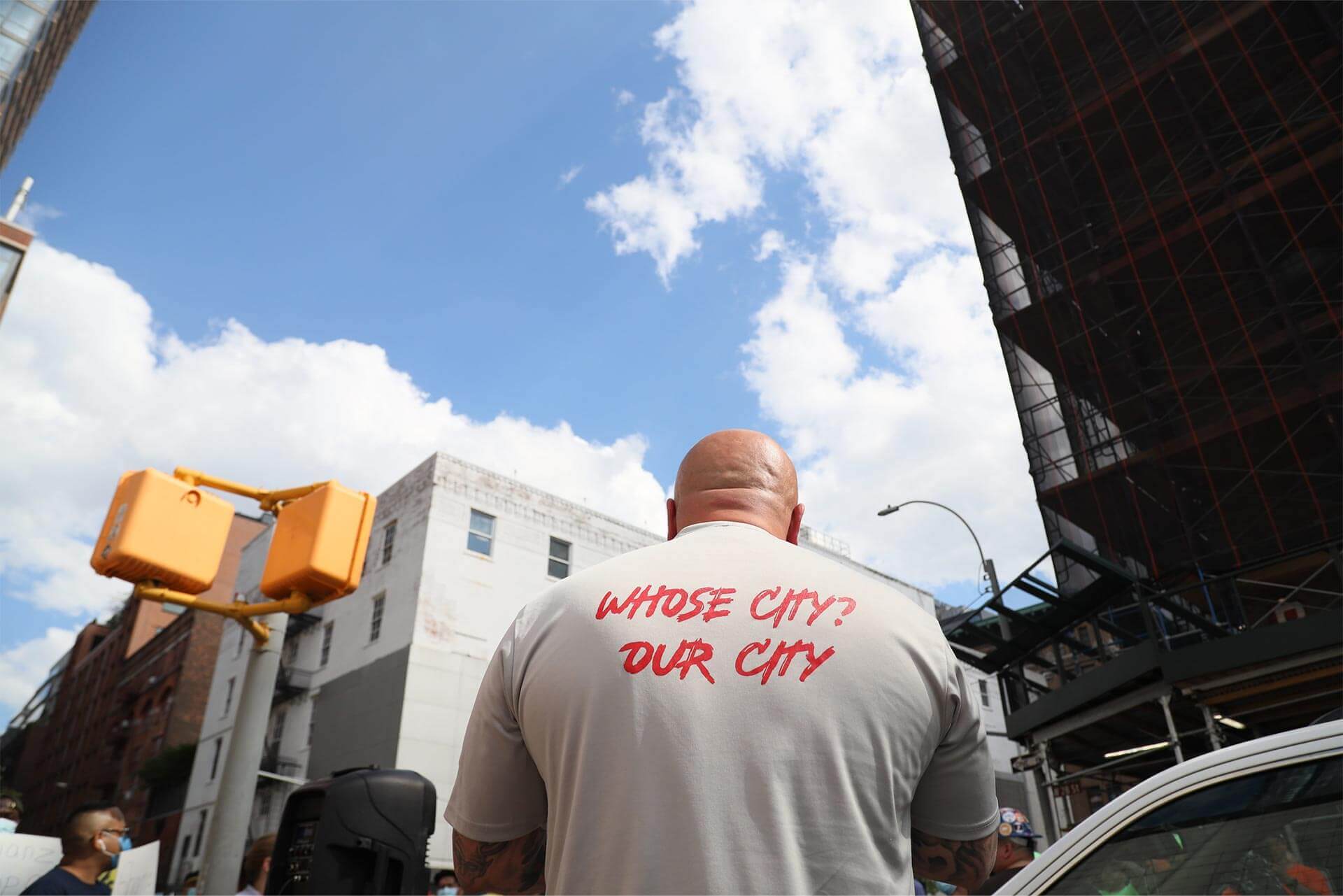
Rebecca lost access to her healthcare when she took a leave of absence from her full-time job to run for local office.
Without health insurance, she had to learn to live without her prescription pain medication.
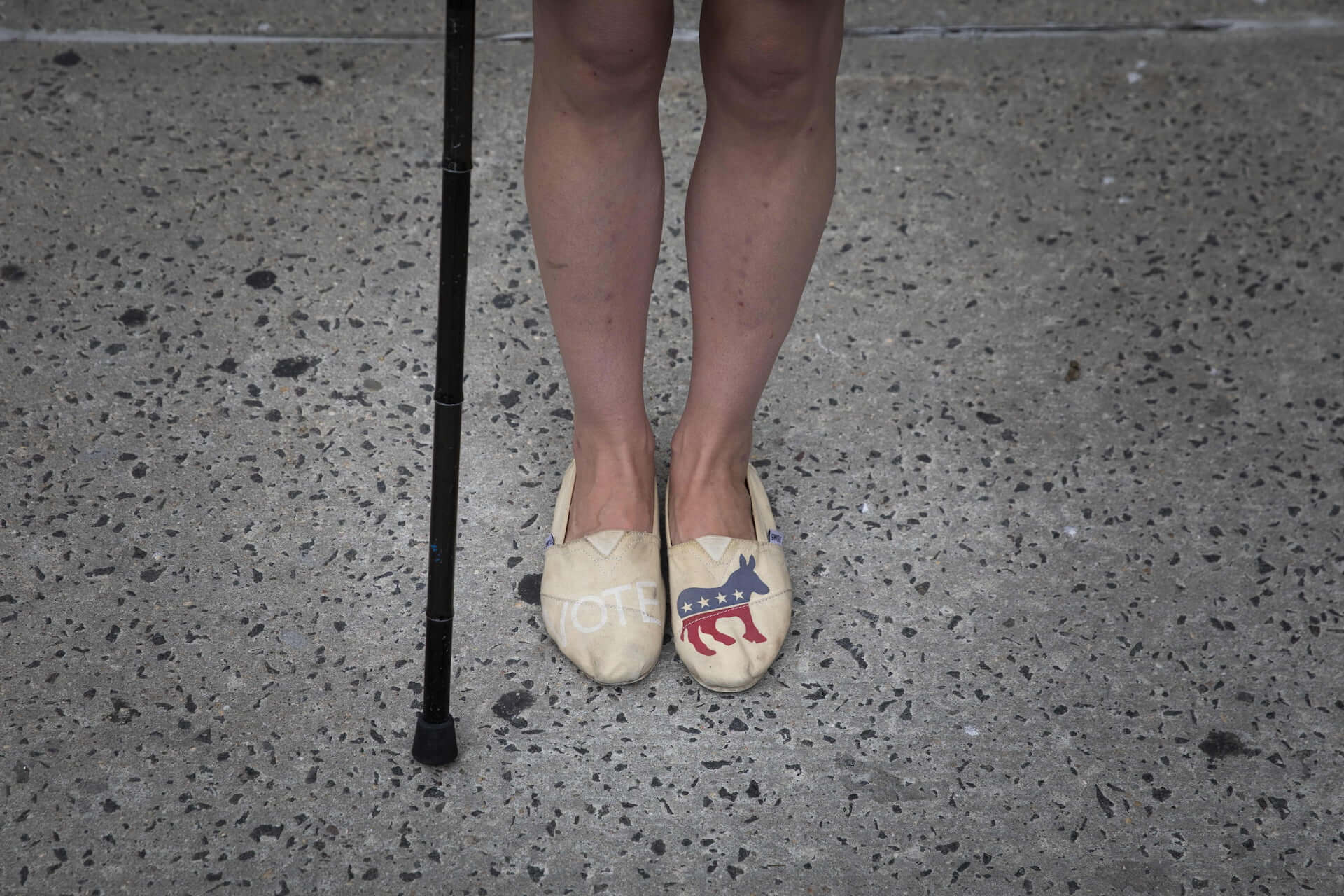
NYC’s Compliance with ADA (or, lack thereof)
The median annual salary for NYC residents with disabilities was $32,000 in 2017, which is barely enough to live in the city. Overall, 34% of people with disabilities have income below the poverty line.
NYC falls short of complying with the Americans with Disabilities Act (ADA), a report published in 2016 outlines. The city fails its residents with disabilities in six significant areas: education, employment, public transport, housing/shelter, access to healthcare and website accessibility.
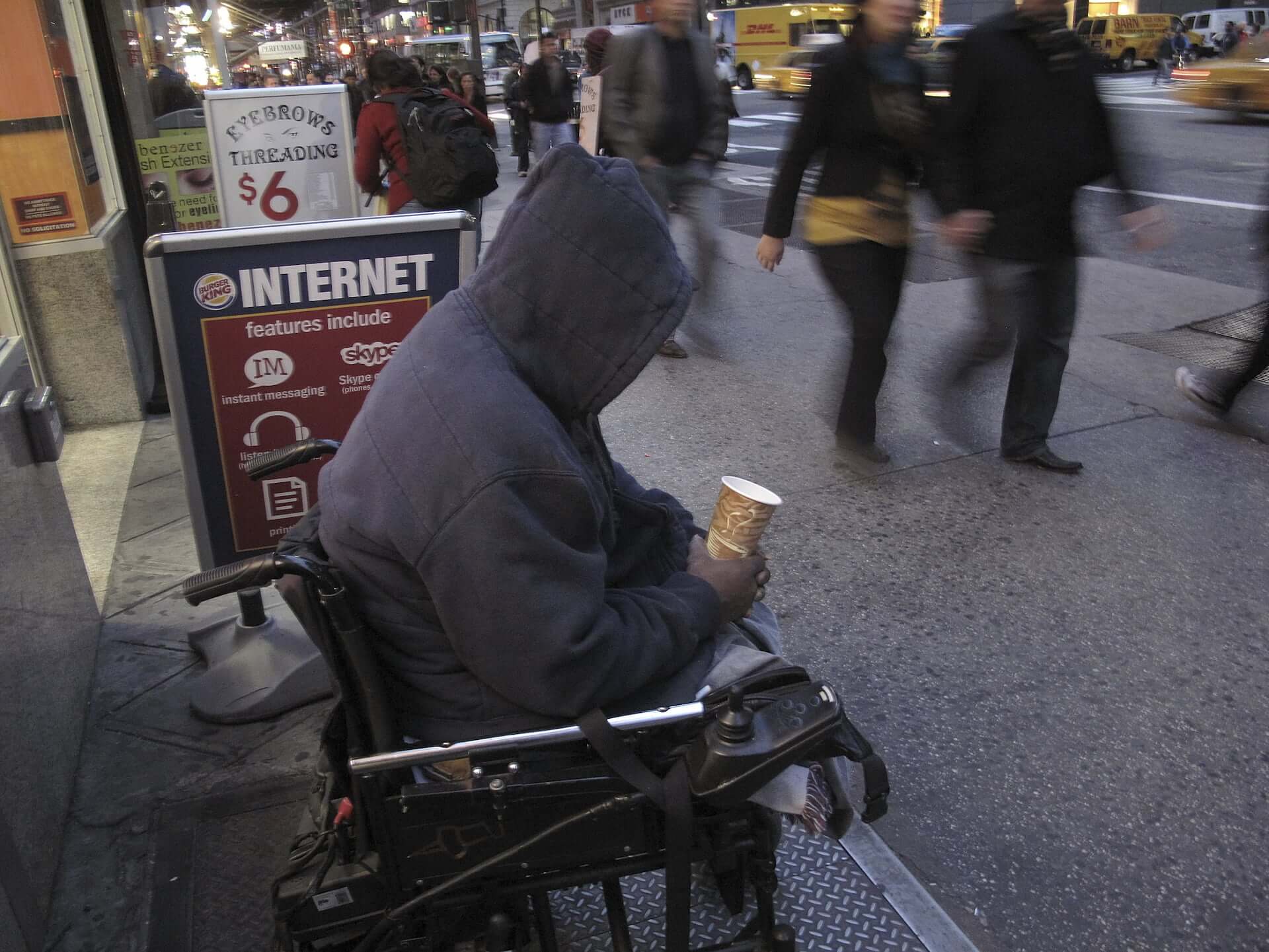
The Americans with Disabilities Act (ADA)
The historic Americans with Disabilities Act (ADA) was signed into law on July 26, 1990, by President George H.W. Bush. The ADA was the country’s first-ever comprehensive civil rights law for people with disabilities, offering protection against discrimination and imposing accessibility requirements in workplaces and in public spaces.
In 2016, Disability Rights Advocates partnered with the Center for Independence of the Disabled, New York (CIDNY) to discuss the city’s shortcomings with regard to ADA compliance. These are the main findings from the report:
- 83% of public elementary schools are not “fully accessible” to people with disabilities.
- Only 29% of working-age people with disabilities were employed full or part-time, compared to the 70% general employment rate.
- New Yorkers with disabilities make up 12% of the city’s population, yet 40% of those who are homeless.
Rebecca canvassing
Rebecca's quote - "I decided to run for public office because I was angry about the inaccessibility in my community and how I was treated. I wanted to fight like hell."
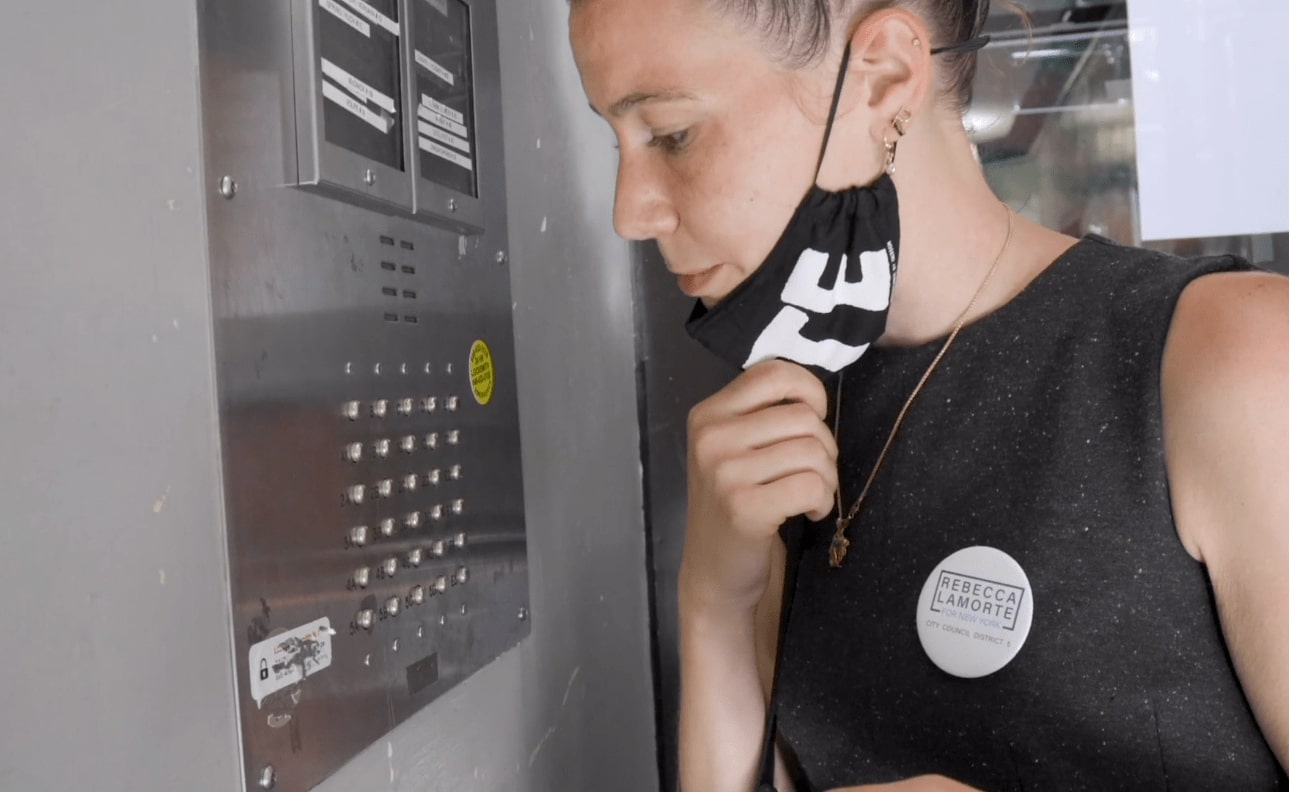
REBECCA ON REPRESENTATION
Rebecca's quote - "Representation is very important in every aspect of life, but especially in politics. I like to say, if you don’t have a seat at the table, then you’re on the menu."
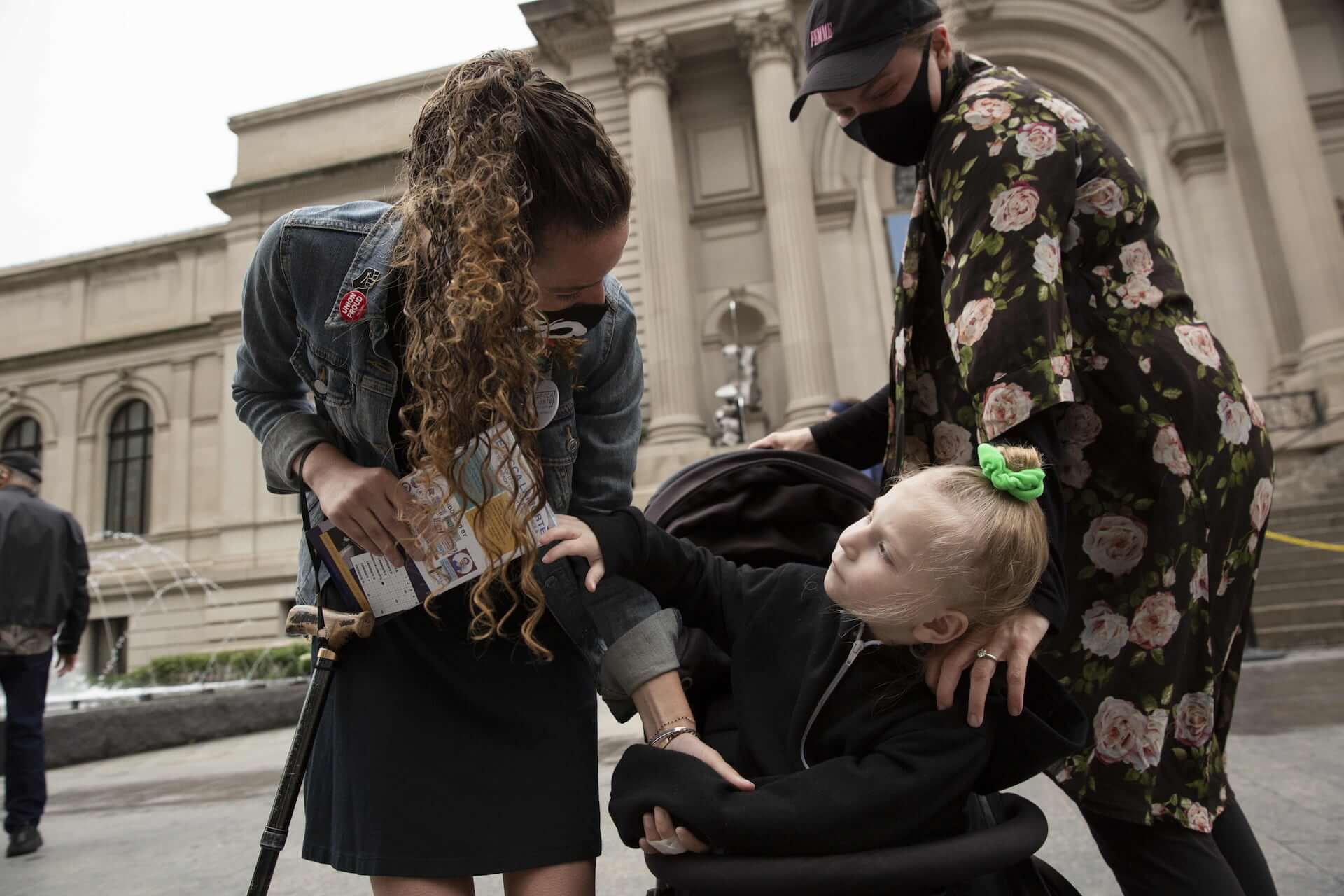
New Yorkers of colour with disabilities are doubly marginalised
New Yorkers of colour in 2019 continued to experience poverty at disproportionately high rates: 20.9% of Latinx and 20.5% of Black residents lived in poverty, double the share of white residents.
Additionally, affordable housing options are primarily located in the outer boroughs of Manhattan. Here, “transit deserts” and few accessible stations severely limit employment opportunities for disabled New Yorkers of colour.
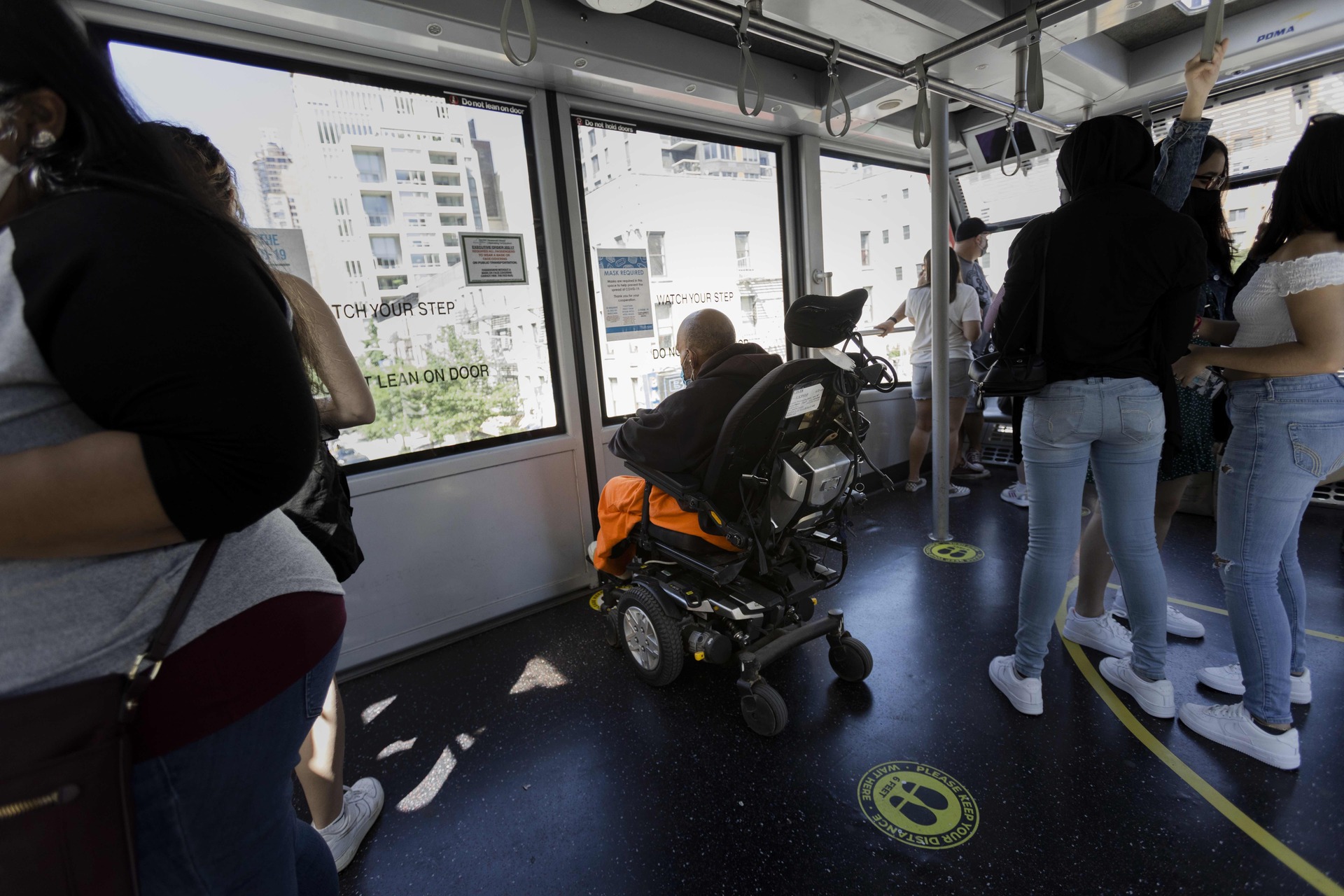
Income inequality along the subway lines
After the Rapid Transit Act was passed in 1891, the construction of the world’s largest underground railway system started in 1900.
The NYC subway lines are heavily concentrated in Manhattan, ignoring large populations in the other four boroughs (Brooklyn, Bronx, Queens and Staten Island).
Working-age New Yorkers with disabilities are more than twice as likely to live in poverty as those without disabilities. The concentration of subway lines coincides with the income inequality in the city. For example, the No. 2 and No. 3 subway lines have the widest range in median household incomes. They shuttle commuters all the way from Lower Manhattan (Chambers Street: $205,192) to the Bronx (East 180th Street: $13,750).

REBECCA’S ELECTION
Rebecca didn’t win the primary, but more than 4,500 New Yorkers voted for her.
Rebecca's quote - "People really discounted us, told us this fight wasn't real. But thousands of people turned out to vote specifically for me as a disabled New Yorker."
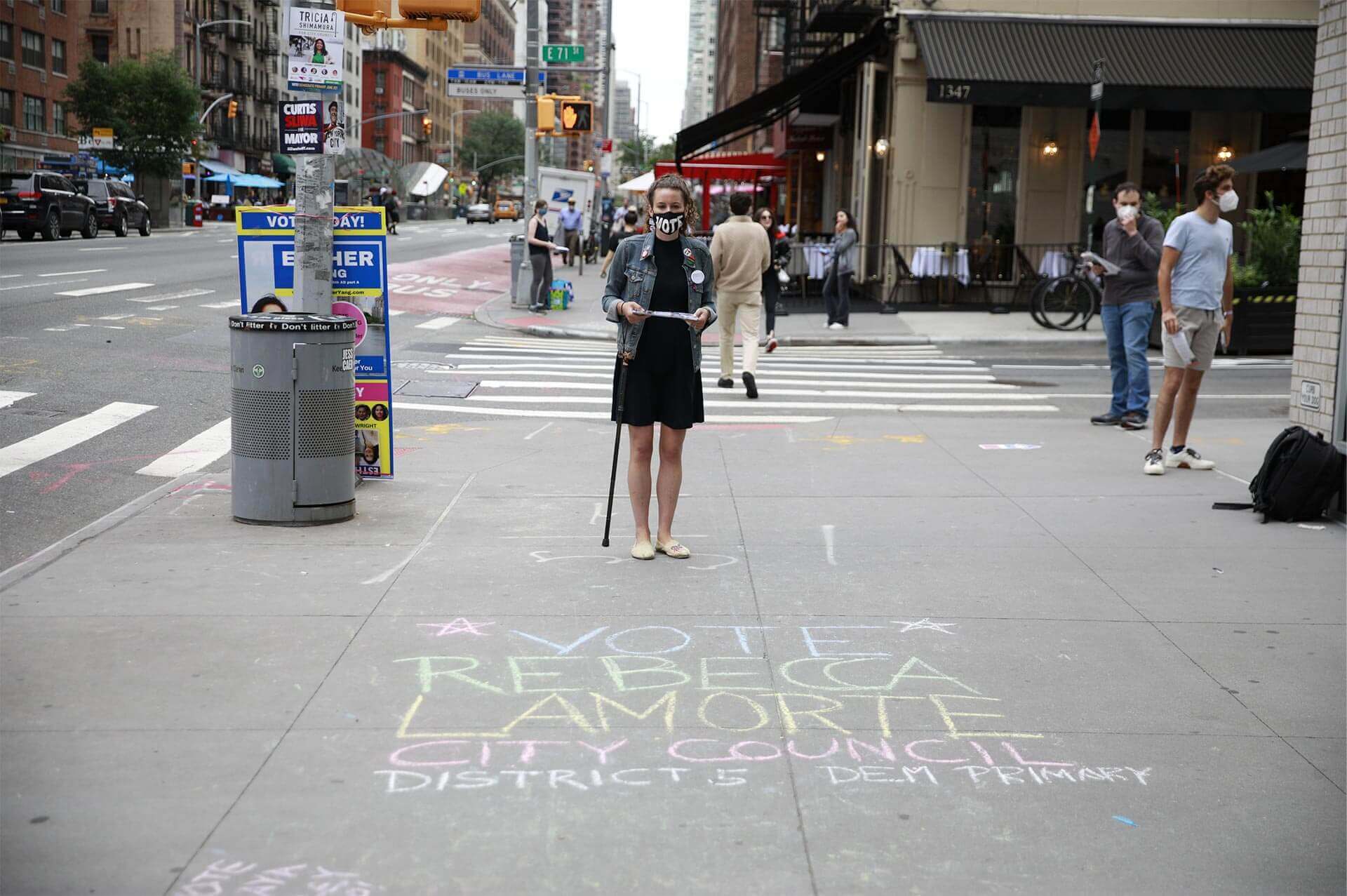
Rebecca's quote - "I can’t imagine calling any other place my home, but that’s also partially out of fear—fear of the inaccessibility that awaits in a new place. If NYC is so inaccessible, think about the difficulty disabled people in other parts of my country and the world face."
